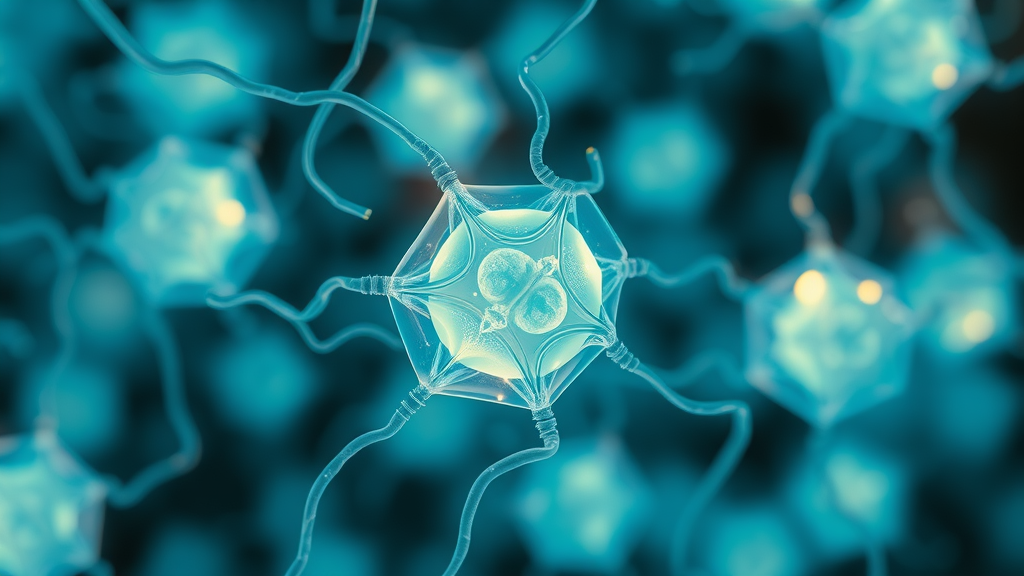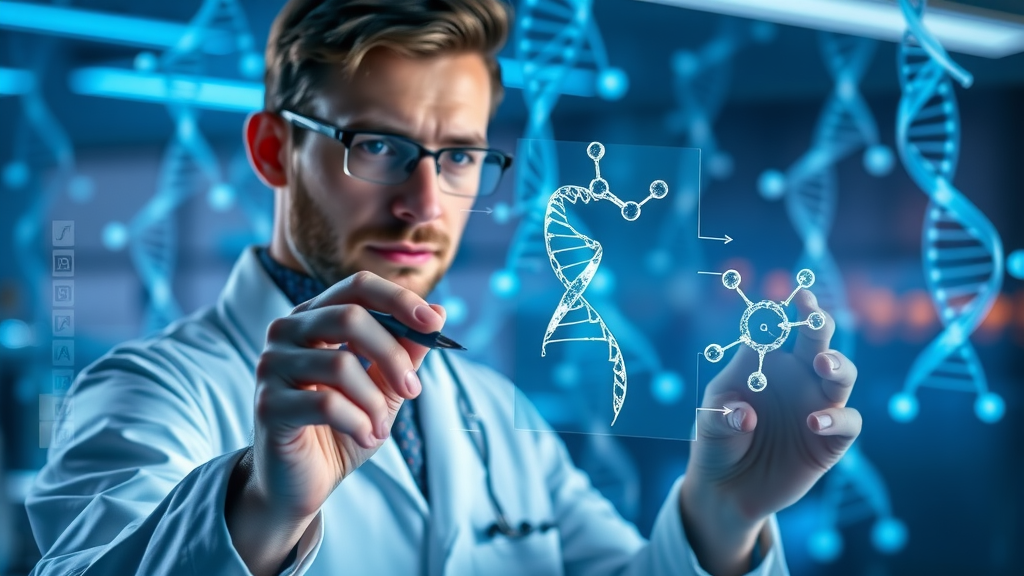Did you know that over 1 million patients worldwide have already benefitted from regenerative medicine therapies? This rapidly evolving field is revolutionizing how we approach healing and recovery.

Understanding Regenerative Medicine: Definitions, History, and Key Concepts
- Explore the core principles of regenerative medicine, its origins, and why it's considered a breakthrough in modern healthcare.
Regenerative medicine represents a dynamic and transformative field within modern healthcare, focused on repairing, replacing, or regenerating human cells, tissues, and organs to restore or establish normal function. At its foundation, the practice leverages cellular biology, utilizing a variety of cell types—including stem cells and differentiated cells—to promote recovery from disease, injury, or degeneration. Unlike conventional treatments that primarily manage symptoms, regenerative strategies aim to address the root causes of tissues and organ dysfunction, often delivering unprecedented healing outcomes.
The origins of regenerative medicine can be traced to breakthroughs in stem cell research and tissue engineering in the late 20th century, culminating in the development of therapies designed to replace damaged tissues and organs. The field has quickly expanded to include cell therapy , gene therapy , and biomaterials that harness the body’s natural capacity for self-repair. Today, regenerative medicine is recognized as a breakthrough not only because of its scientific novelty but also due to its potential to treat a wide range of conditions previously considered incurable.
What sets regenerative medicine apart from traditional therapies is its capacity to stimulate the regeneration of damaged tissues through sophisticated scientific techniques. The integration of cell biology principles and innovative engineering solutions has positioned this field as a major driver of hope and practical change across clinical disciplines—from orthopedics to neurology, and cardiovascular repair to advanced cosmetic treatments.
How Regenerative Medicine Works: The Power of Stem Cells, Cell Therapy, and Tissue Engineering
One of the main goals of regenerative medicine is to repair or replace damaged tissues and organs, offering patients options that go far beyond symptom management. Using techniques such as stem cell therapy , tissue engineering , and cell therapy , physicians are now able to address injuries and diseases at their source. By harnessing the power of human cells , regenerative medicine also maximizes the natural mechanisms within the body to promote healing and restore normal function.
These advanced approaches utilize a variety of cell types , including adult and embryonic stem cells, bone marrow-derived cells, and platelet-rich plasma . Therapies rely on the unique capabilities of these cells to replace damaged tissues, stimulate growth, and coordinate the regeneration of organs. This not only holds the promise of treating a wide range of medical issues but also reduces the need for organ transplants and dependency on donor tissues.
By integrating tissue engineering techniques with cell biology knowledge, scientists have developed cutting-edge strategies to guide and enhance the healing process at the molecular and cellular levels. The use of growth factors, biomimetic materials, and customized scaffolds all contribute to the evolution of regenerative treatment protocols, accelerating recovery timelines and improving patient outcomes.
Stem Cell Science: Harnessing the Potential of Human Cells

Stem cells are unique for their ability to develop into a wide range of specialized cell types in the human body . In regenerative medicine, both embryonic stem cells and adult stem cells are utilized—the former offer the highest degree of plasticity, while the latter, such as those derived from bone marrow or fat tissue, can differentiate into various tissues effectively. These cells are integral for stem cell therapy , providing the raw material needed to repair or replace damaged tissues and organs.
Through careful isolation and manipulation, human cells are guided to become the specific cell type required by the patient—be it cardiac muscle, nerve cells, or cartilage. Recent advances in scaffold technology and biomaterials have further enabled scientists to grow these stem cells in optimal environments, promoting both their healthy development and integration with existing bodily tissues. As a result, conditions as diverse as spinal cord injuries and certain types of blindness are now within therapeutic reach.
As research and clinical studies continue, the use of stem cell therapy is only expected to expand, promising revolutionary changes for patients who once faced a lifetime of disability or chronic disease.
Tissue Engineering Innovations: Repairing Damaged Tissue
Tissue engineering pairs the latest discoveries in cell biology with state-of-the-art biomaterials to create biological substitutes that can repair or replace damaged tissues and organs. By seeding scaffolds with carefully selected human cells , scientists guide the growth of new, functional tissues capable of restoring lost functions. This approach is crucial in treating injuries to cartilage, ligaments, and even more complex structures like the trachea and skin.
The process involves designing biocompatible scaffolds that emulate the natural extracellular environment, supporting cell survival, proliferation, and differentiation. Through the use of growth factors and signaling molecules, tissue engineers are able to direct the formation of mature tissues that integrate seamlessly with the host's own cells. Clinical applications now include the repair of damaged tissues caused by trauma, burns, or degenerative disease, offering real hope for sustainable, long-term healing.
With ongoing research, the boundaries of what can be reconstructed or replaced by tissue engineering continue to expand, with teams working on organs like the liver, heart valves, and even structural bone.
Cell Therapy and the Pathway to Organ Regeneration
Cell therapy is the therapeutic delivery of living human cells into a patient to repair or replace damaged tissues and organs . It encompasses a variety of applications, from boosting the body’s own healing powers to substituting specific cell types destroyed by disease or injury. Stem cell therapy —a cornerstone of cell therapy—has shown promise in treating heart disease, autoimmune conditions, and certain forms of cancer.
One of the emerging frontiers is organ regeneration, using a combination of cell therapies, scaffolds, and gene therapy to prompt the formation of entirely new tissues in situ. The hope is that, in time, conditions like end-stage organ failure may be treatable without expensive transplants or immune suppression, further reducing risks and improving survival.
As clinical trial data and technological innovation continue to grow, cell therapy stands as a compelling alternative to conventional surgery—turning what was once considered science fiction into everyday medical science.
What You'll Gain from This Guide
- A comprehensive understanding of regenerative medicine, practical examples, current therapies, insight into stem cells, cell therapy, and answers to common questions.
By reading this guide, you will gain not only a detailed understanding of regenerative medicine but also valuable, practical insights regarding the clinical impact of these therapies. Whether you are a patient considering therapy, a healthcare professional, or someone simply curious about the cutting-edge science behind human healing, you will learn how cell biology and state-of-the-art engineering merge to revolutionize medicine. This guide also arms you with the knowledge needed to evaluate current therapies, weigh potential benefits and risks, and make informed decisions about your health and wellness journey.
Topics such as stem cell therapy , tissue engineering , and gene therapy will be discussed in depth, clarifying their real-world applications and potential for the future. Our comprehensive approach is designed to make you a well-informed participant in your own healthcare, with answers to frequently asked questions included to address common uncertainties or concerns.
Applications of Regenerative Medicine: Real-World Examples
The broad applicability of regenerative medicine means its therapies span from musculoskeletal repair to advanced skin and heart treatments. In each medical field, the techniques used—whether cell therapy , stem cell therapy , or tissue engineering —are tailored to maximize healing and restore lost function. Below are some of the most promising real-world applications.
These case studies underscore the versatility and expanding potential of this field, where once-untreatable conditions now have hope through biological repair and regeneration. Let's explore how regenerative medicine is truly transforming outcomes for patients every day.
Orthopedics and Musculoskeletal Repair: Stem Cell and Tissue Engineering Breakthroughs

Orthopedic medicine has witnessed rapid advancements, especially through the use of stem cell therapy and tissue engineering for cartilage, bone, and tendon injuries. Athletes and aging patients alike are benefitting from the ability to regenerate damaged tissues without invasive surgeries or long recovery periods. By utilizing bone marrow-derived adult stem cells or platelet-rich plasma, clinicians can stimulate the growth of tissues, reduce inflammation, and restore mobility more quickly.
Procedures now allow for the repair of torn ligaments, degenerative arthritis, and even complex fractures through minimally invasive techniques. These treatments not only speed up healing but also improve the quality of regenerated tissue, decreasing the chances of reinjury or long-term disability for patients of all ages.
Tissue engineering represents an especially exciting frontier, with personalized grafts and biological implants already improving outcomes for musculoskeletal repair—signaling a major leap forward for the treatment of damaged tissue in orthopedics.
Cardiovascular Healing: Using Regenerative Medicine After Heart Damage
The potential of regenerative medicine for treating cardiovascular disease is substantial. After a heart attack or heart failure, significant amounts of muscle and vascular tissue are damaged. Traditional healing is limited, but with cell therapy —which introduces stem cells or cardiac progenitor cells directly into the damaged area—the heart’s recovery process can be transformed.
Through experimental and clinical stem cell therapies , new blood vessels can form, dead heart muscle replaced, and overall heart function improved. Additionally, these treatments can minimize scar formation, strengthen remaining tissue, and potentially restore a degree of normal function for patients once considered beyond the reach of modern medicine.
Ongoing clinical trials continue to investigate the most effective cell types and delivery methods, with a focus on maximizing both longevity and quality of cardiac repair.
Regenerative Approaches to Neurological Disorders
Neurological diseases, such as Parkinson’s, spinal cord injuries, and stroke, historically lacked effective treatments for reversing damage. Cell therapy and stem cell therapy have transformed this outlook. By introducing specific human cells capable of differentiating into neurons or glial cells, regenerative medicine offers the promise to repair neural pathways, replace lost cells, and restore function.
Tissue engineering is being explored to create scaffolds for nerve regrowth, and growth factors are being paired with these techniques to promote cell survival and proper integration with the host nervous system. Early human trials have shown improvements in motor function, sensation, and overall quality of life, even in situations previously deemed hopeless.
While numerous obstacles remain, the advancements so far signal a paradigm shift for patients and caregivers dealing with chronic or degenerative neurological conditions.
Cosmetic and Skin Treatments: Platelet-Rich Plasma (PRP) and Beyond
Platelet-rich plasma (PRP) therapy has entered the mainstream in cosmetic and reconstructive medicine, speeding up healing and promoting natural tissue regeneration. PRP treats facial rejuvenation, scar reduction, and even hair loss by harnessing the body’s own growth factors concentrated from a patient's blood. When injected into the affected area, these concentrated proteins stimulate repair and the growth of healthy tissue.
Beyond PRP, newer cell therapy options—such as the use of cultured skin cells or fibroblasts—are being explored to treat burns, chronic wounds, and pigmentation disorders. These therapies are less invasive, reduce the risk of rejection or side effects, and can offer more natural-looking results than conventional procedures.
As research expands, cosmetic regenerative medicine is expected to provide even more advanced solutions, helping patients restore both function and confidence.
| Applications | Procedures | Conditions Treated | Outcomes |
|---|---|---|---|
| Orthopedics | Stem cell therapy, PRP, tissue engineering | Arthritis, torn ligaments, bone fractures | Improved healing, faster recovery, restored mobility |
| Cardiology | Cell therapy, stem cell injections | Heart attacks, heart failure | Regenerated muscle, improved heart function |
| Neurology | Neural stem cell transplantation, tissue scaffolds | Spinal cord injury, Parkinson’s, stroke | Increased function, nerve regrowth |
| Cosmetic/Reconstructive | PRP, cultured fibroblasts, skin grafts | Burns, scars, hair loss, skin aging | Enhanced repair, aesthetic results |
Types of Regenerative Medicine: From Stem Cell Therapy to Gene Therapy
Regenerative medicine encompasses a spectrum of therapeutic techniques, each tailored to specific patient needs and clinical scenarios. These include adult stem cell therapies, embryonic stem cell approaches, bone marrow procedures, platelet-rich plasma treatments, and gene therapy . Understanding these modalities and their distinctions is key for both patients and physicians when weighing options for care.
The ability to select an appropriate therapy depends on several factors, including the nature of the damaged tissue , the availability of compatible cell types , and the urgency of repair. Below, we break down how each leading type functions and its unique advantages within modern medicine.
Adult Stem Cell Therapy vs. Embryonic Stem Cells
Adult stem cell therapy utilizes cells harvested from a person's own bone marrow , fat tissue, or blood. These adult stem cells can transform into various cell types —such as bone, cartilage, or muscle—making them ideal for repairing damaged tissues without the risk of immune rejection. In contrast, embryonic stem cells , while having the highest potential for differentiation, carry greater ethical considerations and risks, including uncontrolled growth or tumor formation.
Both therapies are being continually refined, but the safety, accessibility, and proven effectiveness of adult stem cell therapy have made it the most common choice in clinical practice today. Ongoing research into optimizing harvesting and delivery methods promises to expand the reach of stem cell therapy for a wide range of diseases and injuries.
As we learn more about the mechanisms driving effective tissue repair, hybrid therapies that combine adult and embryonic stem cell lines may provide new avenues for complex tissue or organ regeneration.
Bone Marrow-Derived Therapies and Platelet-Rich Plasma

Bone marrow-derived therapies draw adult stem cells from a patient's own bone marrow, allowing for targeted repair of musculoskeletal, cardiac, or neurological damage. These therapies have already shown great promise in orthopedic injury repair, immune disorders, and even certain blood diseases. The process is minimally invasive, reducing recovery times and minimizing the risk of rejection.
Platelet-rich plasma (PRP) therapy is another key approach, which involves drawing a patient’s blood, concentrating the growth factors and platelets, and injecting this mixture into injured or degenerative tissues. This boosts the body’s healing response, particularly for tendon, ligament, and joint issues.
Both procedures leverage the body's own resources to stimulate faster, more robust healing with fewer side effects than many traditional medical approaches.
Gene Therapy: Future Directions in Regenerative Medicine
Gene therapy stands at the intersection of cell biology and molecular medicine, offering the potential to correct genetic defects and program cells for optimal regeneration. Current trials are exploring the modification of stem cells and tissues to produce beneficial proteins, promote healing, or resist disease. The ultimate vision is to harness genetic engineering to cure inherited diseases or supercharge the body's ability to repair itself.
These therapies, although still largely experimental, demonstrate a new frontier in regenerative medicine , with implications for everything from rare genetic disorders to common conditions like diabetes or heart disease. As safety and delivery methods improve, gene therapy may become a standard component of regenerative protocols in the near future.
Researchers hope that innovations in gene therapy will reduce the need for donor tissues, minimize side effects, and enable truly personalized medicine for a wide range of patients.
- Adult stem cell therapy: Uses patient's own stem cells to repair or replace damaged tissues; low risk of rejection.
- Embryonic stem cell therapy: High plasticity; ethical and safety concerns limit clinical use.
- Bone marrow and PRP therapy: Minimally invasive, leveraging the body's natural healing mechanisms.
- Gene therapy: Emerging modality for correcting genetic errors or improving regenerative capacity at the molecular level.
The Science Behind Regenerative Medicine: Cell Biology and Human Cells
At its core, regenerative medicine is built on deep knowledge of cell biology and the molecular mechanisms that drive tissue growth and repair. Central to this process is understanding how different human cells interact with their microenvironment—whether naturally or as part of engineered systems that support regeneration after injury.
By mastering the subtle interplay of signals that control cell differentiation, migration, and proliferation, scientists can now influence healing in ways that would have been impossible just decades ago. This foundational science supports every aspect of therapy design, from selecting optimal cell types to engineering scaffolds that support ideal healing conditions.
Principles of Cell Biology in Regeneration

Cell biology provides the blueprints for guiding regeneration in the human body . Every cell’s fate is determined by genetic and biochemical cues from its environment. By decoding and replicating these cues, scientists can manipulate cell types to produce the desired outcome—whether that is repairing a fractured bone, rebuilding heart tissue, or replacing neurons lost to injury.
Advances in molecular imaging and gene sequencing have uncovered the cellular "recipes" for regeneration, allowing for targeted interventions that are both efficient and safe. Understanding cell cycle regulation, apoptosis, and cellular signaling is also crucial for ensuring that introduced human cells develop correctly and do not form tumors or cause unwanted side effects.
The principle is simple, yet powerful: guide the right cell type to the right place, provide optimal conditions, and let nature’s inherent healing systems do the rest.
How Human Cells Contribute to Tissue Engineering
In tissue engineering , human cells serve as the foundational building blocks for new tissue formation. By carefully selecting cell types with desirable properties—growth potential, ease of harvest, low risk of rejection—researchers can seed engineered scaffolds that then mature into functional tissue under controlled laboratory conditions.
The interaction between cells and their artificial or biological matrices is central to successful integration upon implantation. This process requires precise control over cell growth, nutrient delivery, and signaling molecules such as growth factors to ensure healthy tissue formation that is structurally and functionally compatible with the patient’s body.
As we learn more about the mechanics of tissue development, new generations of scaffolds, cell lines, and bioactive molecules promise to make tissue engineering more reliable, accessible, and effective for a wide range of diseases and injuries.
Mechanical and Biochemical Factors that Influence Healing
Successful regeneration relies not only on the correct human cells or cell types , but also on an environment conducive to healing. Mechanical stresses (such as movement or pressure) and biochemical signals (growth factors, cytokines) combine to direct how and where new tissues form. An optimal balance is essential; too little stimulus may result in weak structures, while too much can cause malformation or excess scar tissue.
Biotechnology now allows these signals to be finely tuned—by embedding controlled-release medications in scaffolds, or designing bioreactors where tissues mature under dynamic, lifelike conditions. These innovations reduce risks, improve outcomes, and have made therapies such as stem cell therapy and tissue engineering viable for a broader cohort of patients.
Understanding and manipulating these factors is at the core of ongoing clinical trials and research, propelling the field of regenerative medicine toward greater safety and expanded applications.
Clinical Trials and the Evolution of Regenerative Medicine
Clinical trials represent the backbone of progress for regenerative medicine . By rigorously evaluating therapies in human patients, the medical community gathers evidence about safety, effectiveness, and the best ways to deliver care. Many clinical trials are already underway evaluating stem cell therapy , cell therapy , and gene therapy for conditions such as heart disease, spinal cord injury, and autoimmune disorders.
As new therapies progress through clinical trial phases, they provide valuable data on both short- and long-term outcomes—informing best practices and helping to refine protocols for widespread adoption. Patient safety, reduction of side effects, and demonstration of durable benefits are essential milestones before any therapy can achieve regulatory approval or clinical routine.
Overview of Landmark Clinical Trials in Stem Cell Therapy
Landmark clinical trials in stem cell therapy have provided proof of concept for treating conditions like leukemia, heart failure, and macular degeneration. Trials using bone marrow and cord blood cells have led to breakthroughs in recovery rates and relapse prevention for many blood cancers and hereditary disorders.
In the field of orthopedics, randomized controlled trials have demonstrated improved outcomes in cartilage repair and ligament healing for patients treated with adult stem cell therapies compared to standard surgery alone. These results build the case for further expansion into sports medicine and chronic injury treatment.
The growing number of positive clinical results is helping to drive investment and innovation, accelerating new applications for regenerative medicine worldwide.
Understanding Trial Phases and Patient Outcomes
Each clinical trial progresses through a defined series of phases: from initial safety (Phase I) to efficacy (Phase II), comparison with standard care (Phase III), and ongoing surveillance (Phase IV). As therapies advance, researchers assess not only improvements in tissue function or disease cure, but also rates of complications, side effects, and quality of life.
Modern trials also emphasize “patient-reported outcomes,” capturing the experiences and perspectives that matter most to individuals—pain relief, mobility, independence, and satisfaction with care. This holistic approach helps ensure that therapies delivered in clinics match the expectations and priorities of those receiving them.
With over 1,000 clinical trials now registered around the globe, the potential for regenerative medicine to set new standards of care is unprecedented.
"Clinical trials in regenerative medicine are accelerating, with more than 1,000 studies registered globally—offering hope for conditions once deemed untreatable." - Leading researcher in regenerative medicine
Challenges and Limitations in Regenerative Medicine
While the promise of regenerative medicine is immense, several challenges stand in the way of universal adoption. Issues like scalability —producing enough therapeutic cells for widespread applications— cost containment, and complex ethical considerations have slowed progress in some areas. Policies surrounding embryonic stem cells , patient safety, and liability are still forming as the science advances.
Additionally, biological hurdles such as immune rejection, insufficient engraftment, or unwanted side effects must be managed carefully through both therapeutic design and clinical oversight.
Current Barriers: Scalability, Cost, and Ethical Considerations
Creating enough tissue or stem cells for clinical use is one of the largest hurdles. Lab-based manufacturing is expensive and technically demanding, meaning regenerative therapies are not yet widely available for all who may benefit. Cost is a major barrier for both healthcare systems and individual patients, and insurance coverage remains inconsistent across countries and indications.
The use of embryonic stem cells introduces ethical debates about the source and fate of these cells. Regulations vary globally, with some countries permitting only adult stem cell use while others fund research into embryonic lines to explore their full potential. Balancing scientific progress and public consensus is an ongoing challenge for policymakers and researchers alike.
Advancing the conversation requires honest acknowledgment of these issues, transparent reporting from clinical trials, and interdisciplinary collaboration to propose workable, ethical solutions.
The Biggest Problem with Regenerative Medicine

The single greatest challenge for regenerative medicine is ensuring safety while maintaining effectiveness . Rapid innovation can sometimes outpace our understanding of potential long-term side effects, such as immune reactions, abnormal tissue growth, or tumor development. As promising as cell therapy and gene therapy might be, aggressive oversight and follow-up are required to protect patients.
Regulatory agencies around the world are tasked with setting evidence-based guidelines to minimize risks and maximize benefit. Mechanisms such as comprehensive informed consent, post-market surveillance, and long-term data collection help ensure that emerging therapies do more good than harm.
Only by meeting these safety challenges head-on can regenerative medicine earn and sustain patient and public trust.
What’s Next: Overcoming Hurdles Through Innovation
Scientists are actively developing new automation methods for cell manufacturing , reducing costs, and standardizing quality for broader deployment. Advances in genetically engineered cell types , improved biomaterials, personalized medicine algorithms, and international regulatory harmonization are all helping to address present limitations.
Collaborative, multidisciplinary research teams—pairing biologists with engineers, AI specialists, and clinicians—are accelerating both innovations and applications. As knowledge deepens and best practices are codified, expect to see regenerative treatments making the shift from specialized clinics to mainstream hospitals over the next decade.
With each new breakthrough, the reality of accessible, affordable, and effective regenerative medicine draws closer to everyday patient care.
People Also Ask About Regenerative Medicine
What are examples of regenerative medicine?
Common examples include stem cell therapy for orthopedic injuries, platelet-rich plasma (PRP) for tendon and skin repair, cell therapy for heart disease and immune disorders, and tissue engineering for skin grafts or cartilage replacement. Gene therapy and bioartificial organs also fall under the umbrella of regenerative techniques, offering solutions where traditional treatments fall short.
What are the 4 types of regenerative medicine?
The four main types are: stem cell therapy , tissue engineering , platelet-rich plasma (PRP) therapy, and gene therapy . Each works through a different mechanism—either by introducing new cells, engineering replacement tissues, stimulating repair with growth factors, or editing genes for improved healing. Selection depends on the patient's diagnosis and treatment goals.
What is regenerative medicine?
Regenerative medicine is a branch of medical science focused on harnessing and enhancing the body’s ability to heal itself. By using technologies such as stem cell therapy , cell therapy , tissue engineering , and gene therapy , the goal is to repair, regenerate, or replace damaged tissues and organs , helping patients recover from injuries and diseases once considered untreatable.
What is the biggest problem with regenerative medicine?
The biggest challenge is ensuring that therapies are both safe and effective . Risks may include immune reactions, tumor formation, and long-term side effects that are not yet fully understood. Regulatory, ethical, and financial barriers add complexity, making it important to balance innovation with patient safety and public trust.
Frequently Asked Questions about Regenerative Medicine
-
Is regenerative medicine safe and effective?
Most current therapies have favorable safety profiles when administered by trained professionals, but risks such as infection, rejection, or abnormal growth remain possible. Clinical trials continue to refine protocols for maximum benefit and safety. -
How is cell therapy different from stem cell therapy?
Cell therapy refers broadly to the transplantation of any human cells for therapeutic effect, while stem cell therapy is a specific type that uses stem cells to promote regeneration. Not all cell therapies use stem cells—some may use mature or modified cells instead. -
What conditions can be treated with regenerative therapies?
Therapies are being used or studied for orthopedic injuries, heart damage, neurological disorders, burns, hair loss, autoimmune conditions, and some types of blindness or hearing loss. The range of treatable conditions expands as research progresses. -
Are there side effects or risks with regenerative medicine?
Potential side effects include local pain, inflammation, immune response, infection, or, rarely, unwanted cell growth. Long-term risks are being explored in ongoing clinical trials, and careful patient selection reduces complications. -
How can someone access regenerative medicine treatments?
Access generally requires consultation with a specialized clinic or research center. Candidates are selected based on clinical need and eligibility for available therapies or trials. Regulatory approval varies by country and indication.
Summary and Practical Takeaways: Is Regenerative Medicine Right for You?
- Regenerative medicine represents a paradigm shift in healing, using advanced techniques like stem cell therapy, tissue engineering, and gene therapy.
- Current therapies are showing promise for conditions ranging from orthopedic issues to heart disease and burns.
- While challenges exist, clinical trials and ongoing innovation continue to expand access and improve outcomes.
Assess your medical needs and consult a qualified professional to explore regenerative medicine options tailored to you.
Get Started with Regenerative Medicine Today
Ready to explore the benefits of regenerative medicine for yourself? Reach out to request your complimentary health screening.
Call us now at 2816988698.
Regenerative medicine is a rapidly evolving field that focuses on repairing, replacing, or regenerating human cells, tissues, and organs to restore normal function. This approach leverages the body’s natural healing processes to address the root causes of diseases and injuries, offering potential treatments for conditions previously considered incurable.
The National Institutes of Health (NIH) provides an insightful overview of regenerative medicine, highlighting its transformative potential in creating artificial organs and lab-on-a-chip technologies. These advancements aim to improve our understanding of disease development, enhance drug testing accuracy, and develop cell-based therapies for various conditions, including diabetes and Parkinson’s disease. ( nih.gov )
Additionally, the U.S. Government Accountability Office (GAO) discusses the therapeutic applications, challenges, and policy options associated with regenerative medicine. The report identifies key challenges such as standardization, regulation, and manufacturing complexities, and presents policy options to address these issues, aiming to enhance the development and use of regenerative medicine technologies. ( gao.gov )
For a comprehensive understanding of regenerative medicine, including its core principles, applications, and the latest advancements, these resources offer valuable insights into how this field is revolutionizing healthcare.
 Add Row
Add Row  Add
Add 


Write A Comment